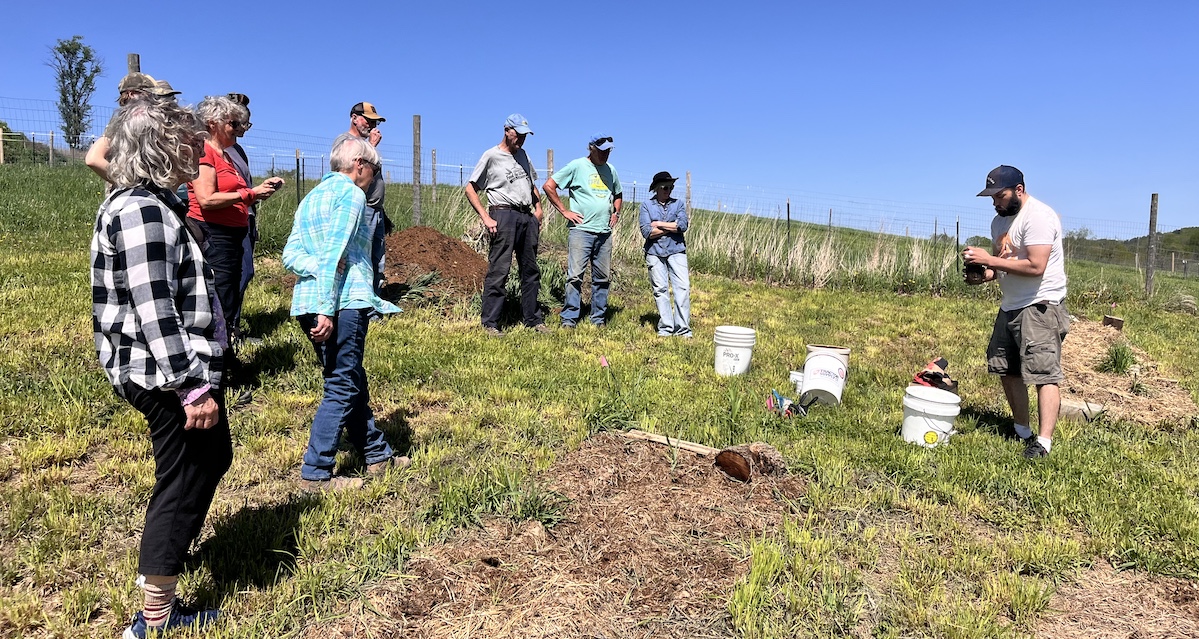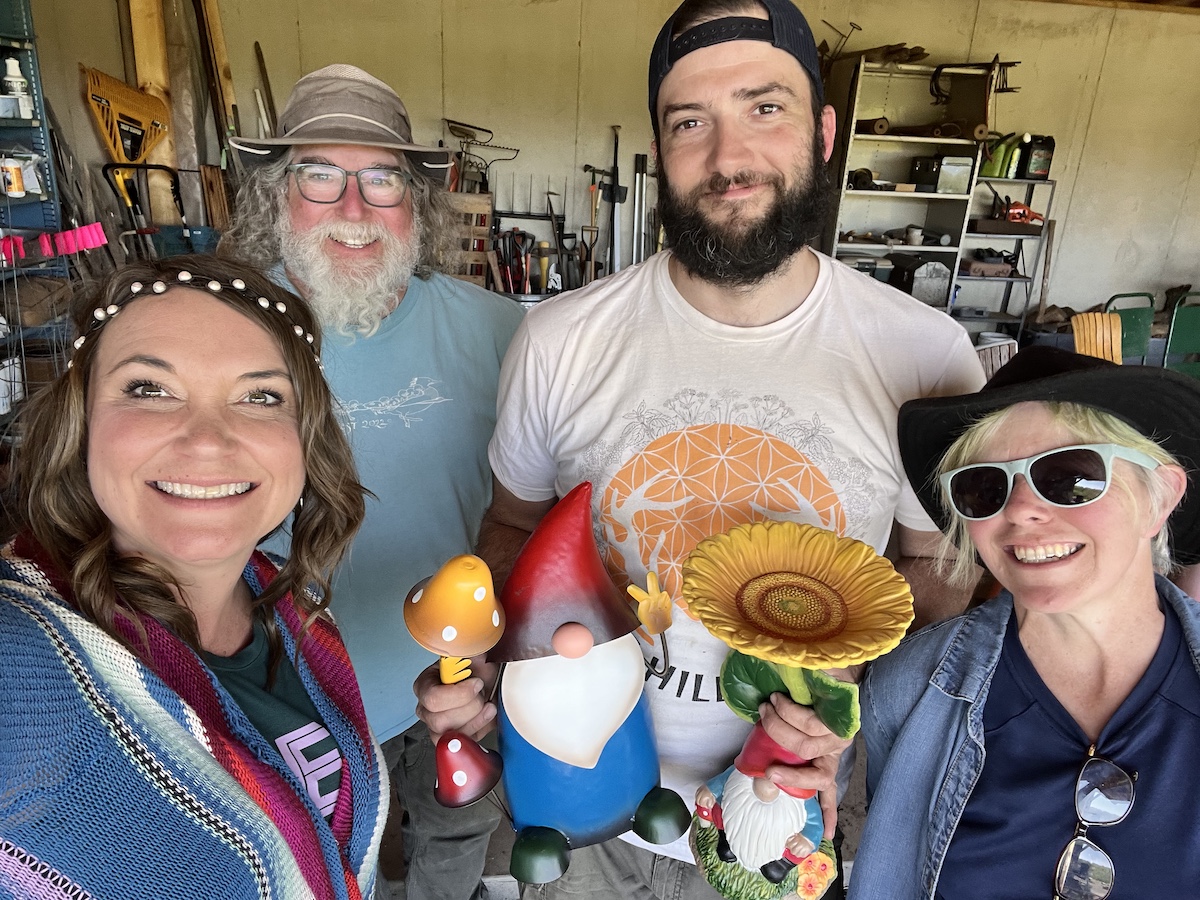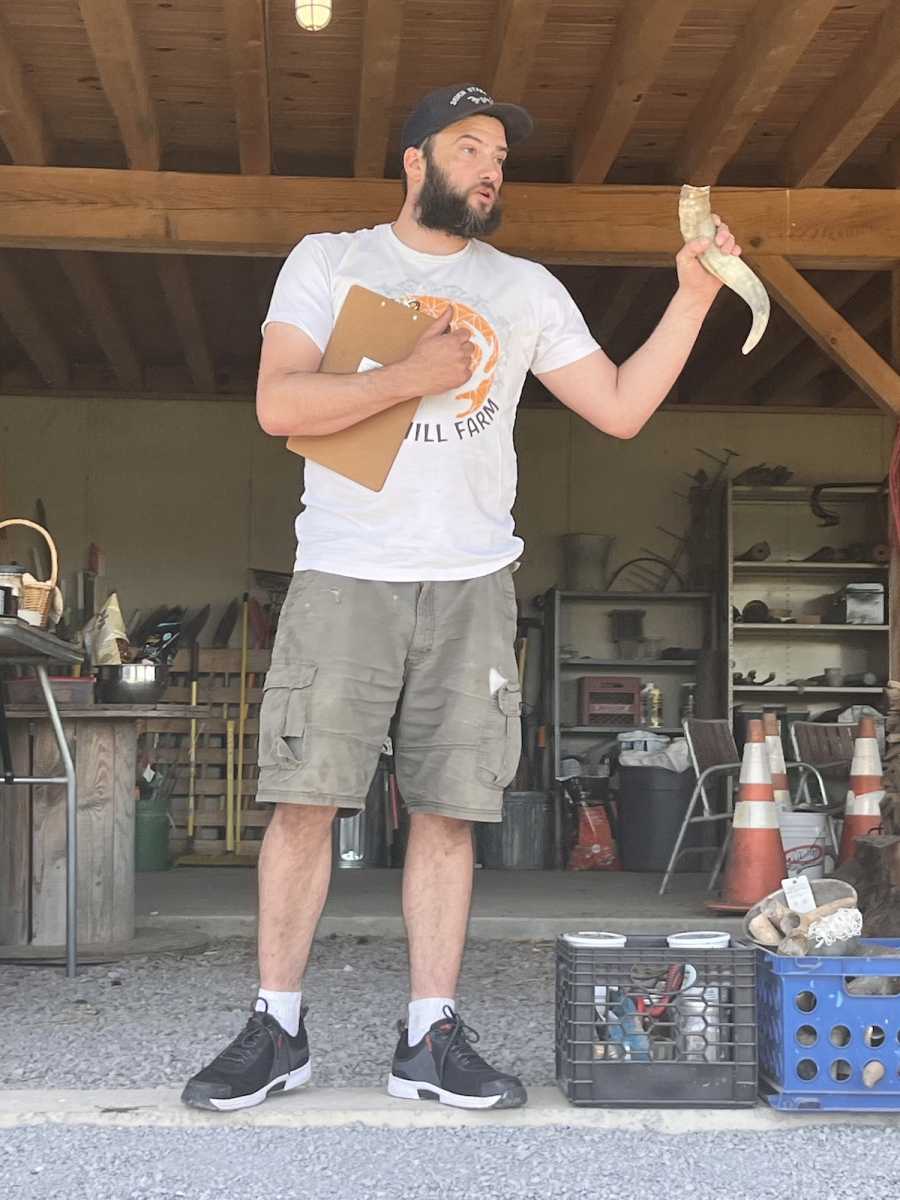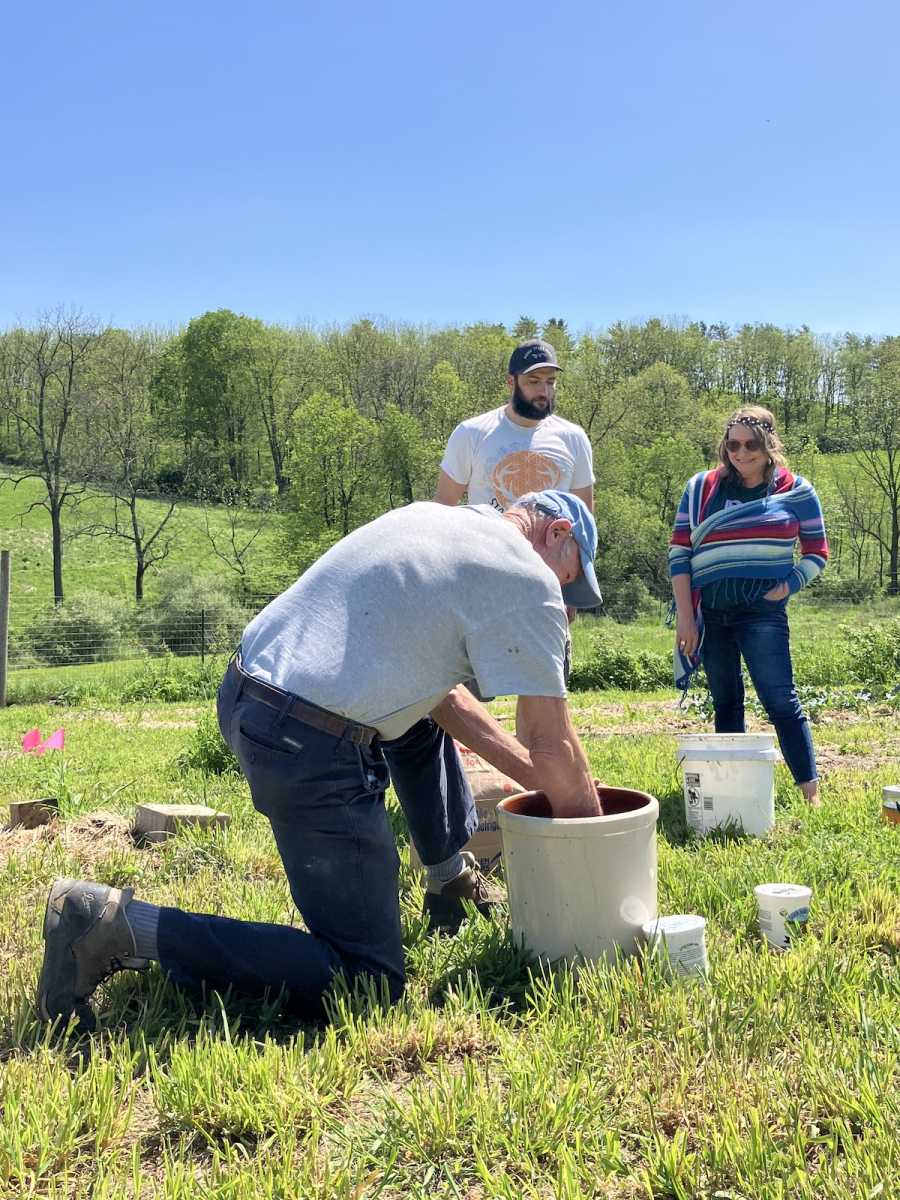
Reprinted from Demeter USA's May e-newsletter. You can sign up for their monthly newsletter here.
By Nell Hanssen
On May 10th, my friend and colleague Sarah Rhynalds and I hosted a biodynamic workshop led by Dan Ditzler whose biodynamic consulting business, Cow Power, is located in Southeastern Pennsylvania. It was wonderful to have him join us for some cross-pollination and education, both experiential and mystical, on the small farm in Centre County, PA, where my partner Chuck and I are working on creating a farm business that includes lots of outreach about farming, gardening, and sustainability.
Our attendees had varying degrees of familiarity with biodynamic practices. About half of our guests were hearing about biodynamics for the first time. We live in a rural agricultural community with many fervent homesteaders and gardeners, however, and about 15 friends and other locals gathered to learn more about “Working with the Living Earth,” as Dan titled his presentation.
We assembled under our bank barn on a rare sunny day, watched curiously by our small flock of sheep who seemed very interested in the proceedings. Dan led us through a brief summary of Steiner’s Agriculture Lectures, and described each of the Preparations, how they are sourced, made, and applied. We then took a break to stand in a circle and go through some eurythmy forms and movement.
The class delved most deeply into the 501, or Silica Preparation. With quartz crystals found locally, and some that Dan brought with him, we produced a fine silica powder by breaking up and then grinding the crystals between sheets of glass. We placed these in cow horns, adding water, and left them to sit while we walked down the hill to the garden for the next segment of the workshop. The next day, Chuck and I buried one of the horns in our garden, planning to dig it up in September.
Dan generously brought each of the other preparations along with him, to give the class the flavor of activating each one through their various stirring and mixing processes. We gathered in our farm’s garden, which is shaped like a hexagon, with beds radiating out from its center. Attendees took turns mixing each of the preparations in jars and five gallon buckets while Dan spoke more about their qualities and guidelines for application.
We applied the 500 throughout the garden, with a generous amount going into my horse manure compost pile, which has been uncooperatively resisting decomposition since it arrived on the farm last fall. We added the other preparations to the compost pile as well, endeavoring to enliven the pile and jumpstart some microbial activity. I plan to turn the pile and add some green material in the next few weeks but am already seeing an increase in temperature and earthworms moving up from the bottom and getting to work on the manure and sawdust bedding.
What did it feel like to bring the science and mysticism of biodynamics to our small community? It was gratifying to see our attendees engage with the information, pitch in on grinding the silica, and concentrate on learning the eurythmy forms. One could spend a lifetime learning what we touched on in just a few hours. Can the intent of the Biodynamic movement be spread in small homeopathic-style doses, seeded throughout the land to multiply like soil microbes in a garden bed, one small community gathering at a time? Perhaps that may be the best way to do it.
Farming and gardening is a magic all its own, as we immerse ourselves in the earth’s cycles of life and death, the faith we sow with each seed we plant, the gratitude of the harvest, and the season of rest while we anticipate an annual, but still miraculous, rebirth each spring. Trees add a ring each year they survive on the planet, and our own less concentric rings of knowledge, inspiration, and hope add to our individual internal architecture, making us strong enough to weather seasons of plenty or scarcity. Biodynamics sees the farm in its rightful place in the ecosystem, and we are invited to step into our own spot within the same, to tend, grow, and harvest as one thread in the ecological web that connects each element. And what gardener wouldn’t respond to an invitation like that?



Nell Hanssen is a Certification Specialist with Demeter USA. She is a farmer and organic inspector who has worked in the sustainable agriculture and organic farming world for the last 20 years. Working with Demeter’s overseas traders has provided a broader perspective on the biodynamic movement around the world, and the diversity of people, products, and production systems. Outside of work, Nells loves gardening, playing music, birding, and botanizing. She also enjoys hiking, writing, cooking and preserving food, and working in my community to promote sustainable agriculture, water quality, and local foods.
